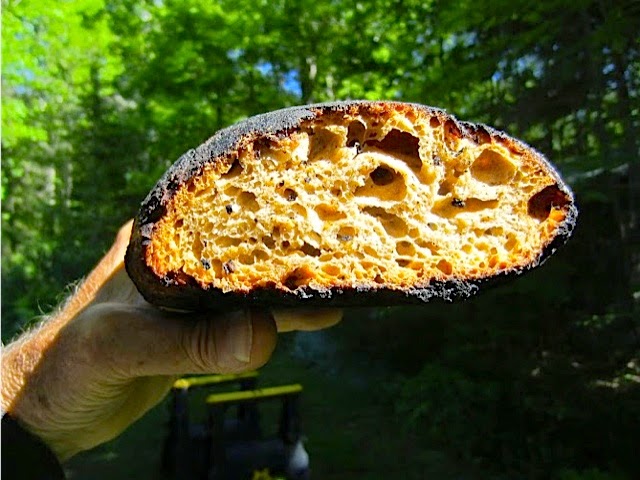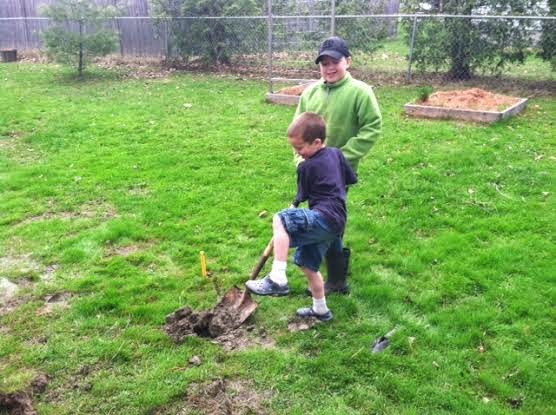Small brick oven by the pond
Just yesterday everything changed for me. I finally learned how to bake bread in my small brick oven. The problem I was having in the past was the result of not enough mass and not enough insulation, and the breads were terrible. I simply could not get the oven to retain enough heat for bread baking. Yes, I could make pizzas and flatbreads because I could maintain a fire in the back or on the sides, but without the constant flames, the oven would soon lose its heat.
I decided to try something different. Instead of firing the oven to a desired temperature, sweeping out the hot coals, peeling the loaf or loaves in, closing the door and finally, keeping my fingers crossed, I thought I'd work with my Dutch oven.
Dutch oven preheating
First the Dutch oven was preheated in the flames. Then The bread dough went into the Dutch oven, and I slid it over to the edge of the fire. I baked the bread for 45 minutes with the cover on and then 10 minutes with the cover off.
After the first 15 minutes I lifted the cover off to check the bread. There was good oven spring, the crust was starting to develop, and I knew I would be okay.
After the allotted time, the bread was beautifully baked.
Bread beautifully baked
The oven temperature? That's hard to say, but I tried to keep it around 500º F around the Dutch Oven. Here you'll have to experiment.Using this technique to make just one or two breads at a time is perfect, even if your oven is not, and I highly recommend it.











































